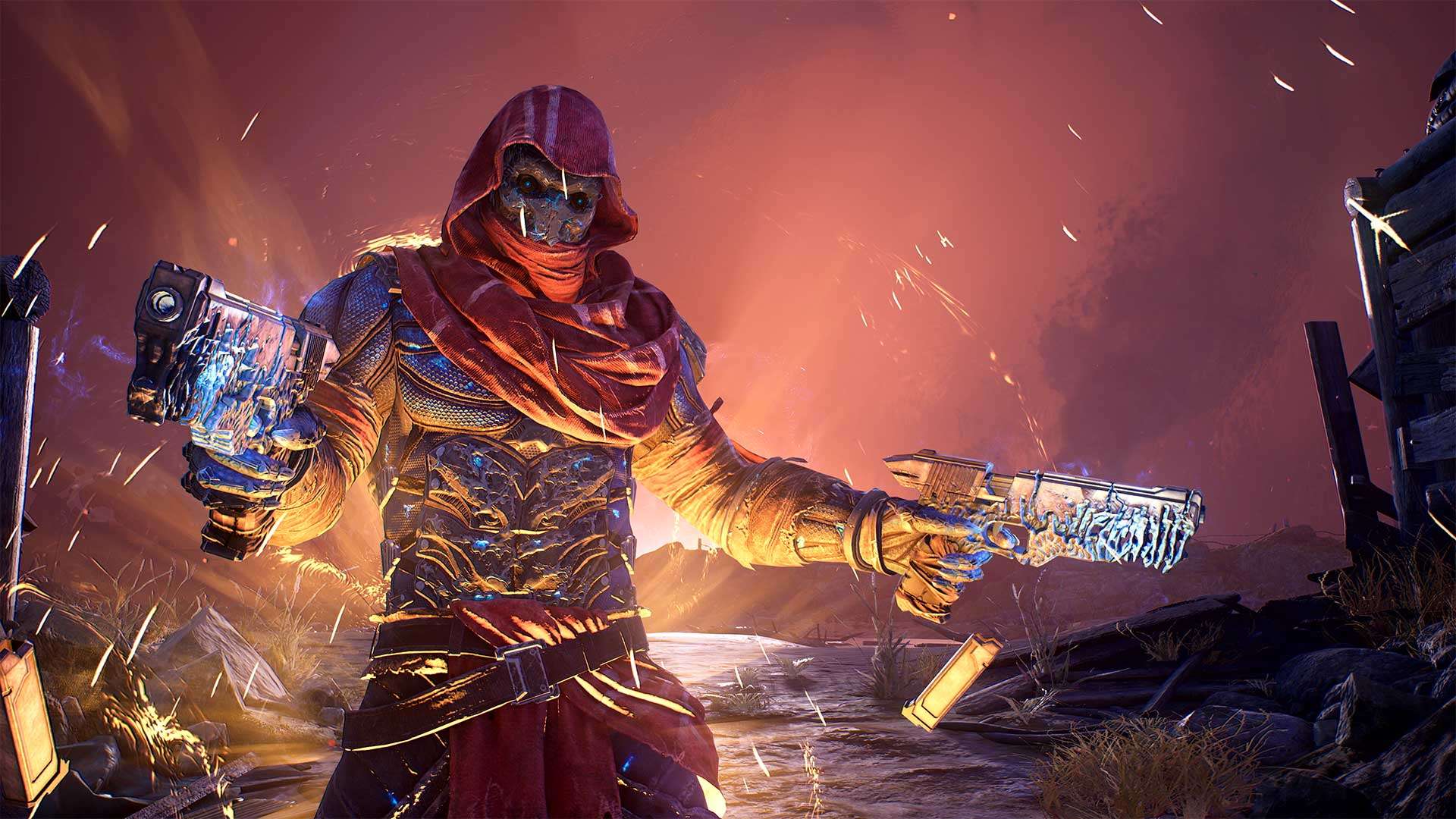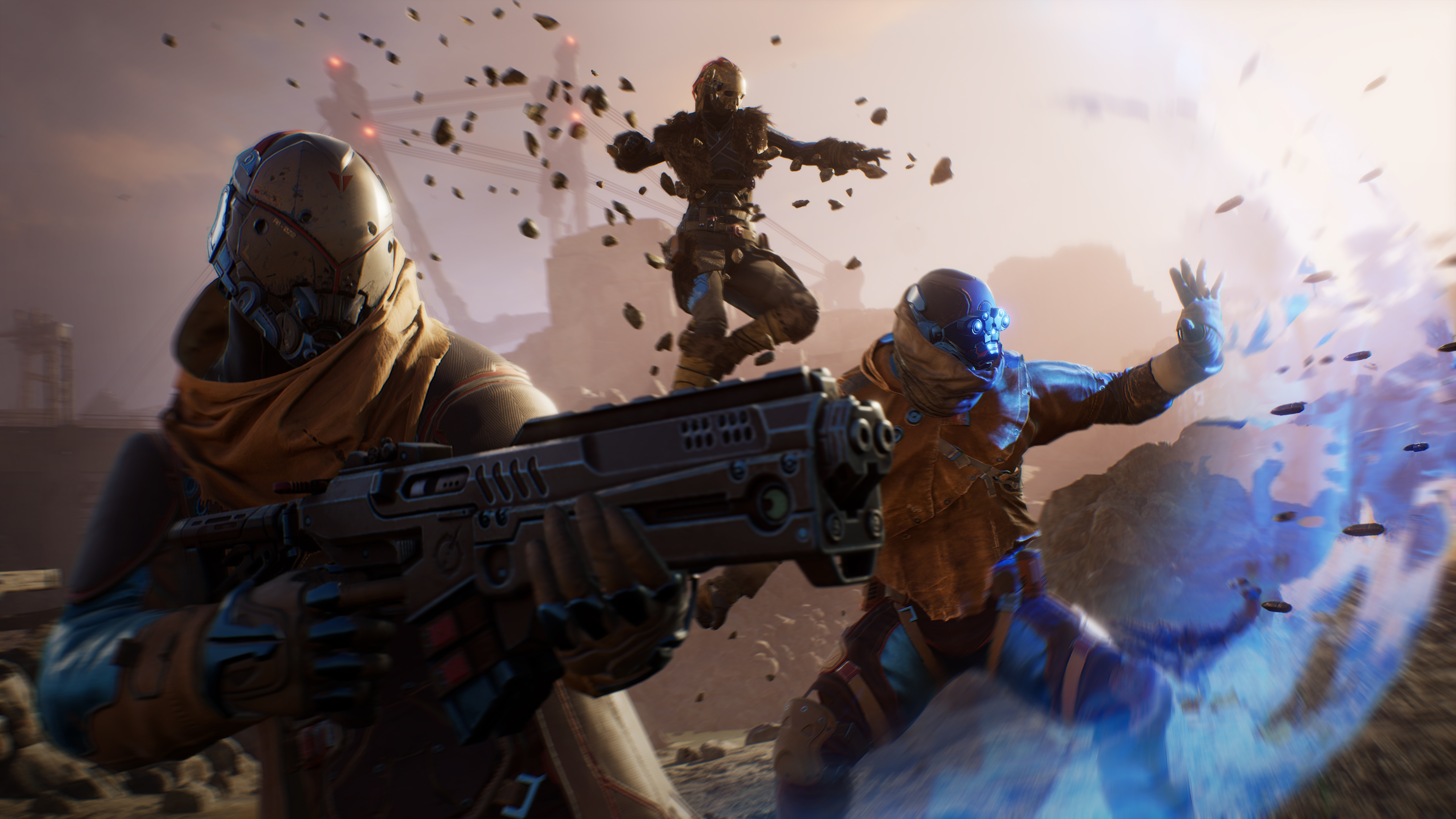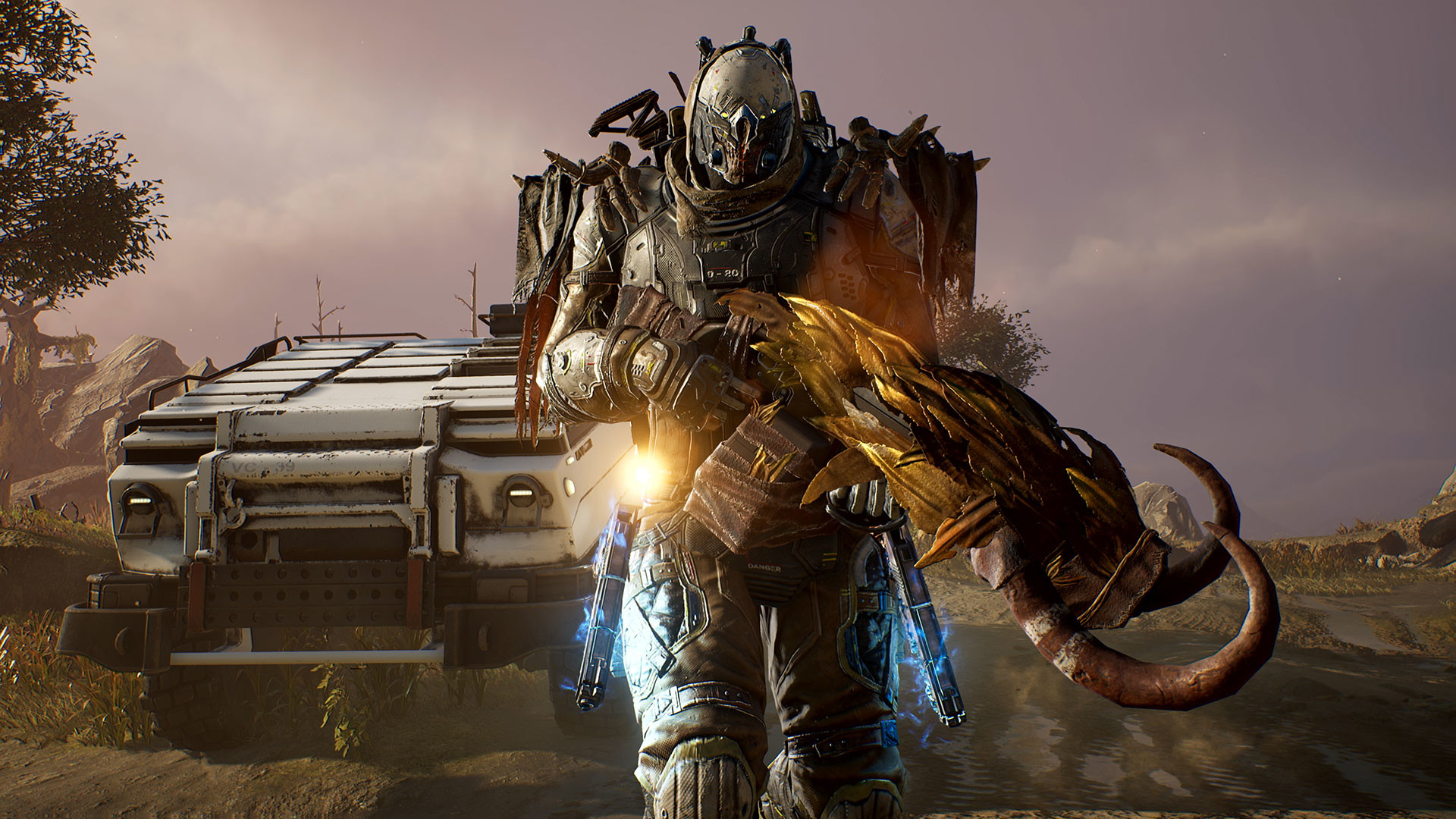Why Outriders isn't just a Destiny knock-off
If the loot stays interesting, Outriders could be a winner.

Sometimes, you need to get your hands dirty to really know what a game is about. Outriders, the latest from People Can Fly, hasn't sold itself particularly well and a single gameplay video doesn't give an accurate read on what the game actually is. It's important to know that Outriders isn't Destiny, even if some obvious inspiration has been taken with its style. This is a co-op RPG with a beginning and end.
The premise is intriguing enough: You're part of a terraforming operation looking for a new home after Earth apparently tore itself apart—but although the first planet you set down on looks promising, things soon go spectacularly disaster-shaped as an event causes your character to become ‘Altered,' granting them a host of superpowers. So begins the civil war that plunges the planet into seemingly endless conflict that's basically just a good excuse to shoot a bunch of guerilla soldiers. Unfortunately, that intrigue doesn't carry through to the aesthetic. Outriders comes off like Gears of War wearing skinny-fit armour to leave an impression that's overwhelmingly bland. Honestly, if someone told me this was a sequel to some PS3 launch-era shooter, I wouldn't doubt them.
The demo even manages to put its worst foot forward, with the kind of tutorial you’ve been babied through a million times, featuring a shooting range, a lesson in interacting with basic items, and exhausting chunks of narrative exposition that, twenty minutes in, you’re not totally sure you care about. But stick with it and, once the training wheels come off, Outrider's most interesting elements come into focus.
Releasing a demo is a smart move because the best thing about Outriders is its character classes and its unique approaches to combat, which takes some time to get accustomed to. There are four classes available, and the main difference between Outriders and other class-based shooters is that killing is the only way to heal yourself. There are no first aid kits or regenerating health here—you have to play to your class's strengths to recover health in hairy situations.
Class act
Take the Devastator class, which is where I’ve spent most of my time. Essentially the Tank of Outriders, they can only gain health back from close range kills. Squatting behind cover might seem like the natural thing to do in a third-person game that looks and—initially—feels like this, but as you take damage the pressure grows to do something less passive or die. One of the starter abilities for the Devastator is Golem, which covers your character in a jagged stone skin that mitigates damage to your remaining health. Slap that on and then use Gravity Leap to close distance on enemies with a powerful slam that grinds baddies into a crimson mist and, of course, gives the player a chunk of health back.
It's a totally different story for the Technomancer, who can regain health from any kill, but is largely a support class and has to rely on gadgets. A defensive approach is required when playing solo, but as part of a team you benefit massively from your deployable turrets and mines, each one reaping health benefits from kill assists.
Abilities are where Outriders really starts to shine and elevates what otherwise seems like a fairly standard cover shooter.
Abilities are where Outriders really starts to shine and elevates what otherwise seems like a fairly standard cover shooter. Having picked the class that best suits your play style, there's further fine-tuning to do in the form of picking the three abilities you take into battle. Even in this limited demo, there’s room for subtle but meaningfully different loadouts. For instance, you can only take three of these abilities into battle and it's possible to unlock a fourth. The Devastator eventually earns the ability to absorb incoming fire and reflect it back towards enemies unfortunate enough to be in front of you. A quick look at the full game's abilities reveals some damage-over-time and area affect powers that can be slotted into your loadout. Based on the in-menu descriptions for later abilities, they appear to offer dramatic differences to the ones accessible now.
The biggest gaming news, reviews and hardware deals
Keep up to date with the most important stories and the best deals, as picked by the PC Gamer team.
Outriders' considerable skill trees suggest a bigger variety set to come in the full release, which bodes well. Being able to create multiple classes per account and, mercifully, skip the tutorial if you've already played the demo (three main storyline missions with five side missions scattered throughout the hub and mission areas) with your first character is a nice touch, especially with progress carrying over as well. It's a smart opportunity to try out different classes and loadouts to see which one works for you before fully committing.

Altered beast
Another interesting wrinkle is that developer People Can Fly is insisting that Outriders—despite sharing more than a few similarities with notable looter shooters—is not a live service game. In terms of structure, it seems to have more in common with the first two Borderlands games than an ongoing story like The Division or Destiny. It has a linear story-driven campaign with occasional sidequests to pad things out.
The game also features drop-in/out co-op play and the ability to bump up the overall difficulty. Difficulty also dictates the quality of loot available, so you're rewarded for taking on a bigger challenge. At any point, you can hop back into completed missions at any time to earn more loot or join up with friends. It is hard to judge how grindy that loop will end up being from a limited stack of missions, but the fun comes from upgrading your abilities, armour, and weapons, then cranking up the difficulty on subsequent runs, hoping to hit the jackpot.
On top of the ability upgrades through normal leveling, there are also perks attached to weapons that buff each class's abilities or tack on modifiers, offering further customisation and personalisation. I was lucky enough to receive a Legendary shotgun, Outriders' highest tier, that granted three seconds of armour (a ludicrously long time in frantic firefights) for every kill. Factor in the Devastator class receiving their health bonus from close range kills and I started to feel like an unstoppable force.
People Can Fly is insisting that Outriders is not a live service game.
When you’re sat in cover, popping up to fire at enemies, Outriders isn't particularly special. The guns all feel a bit flat and lack the impact I appreciate in Gears of War's arsenal. Here, you’re pointing at an enemy and hoping your numbers are big enough to make a dent in a health bar. I had more fun once I found myself a legendary gun that could freeze and shatter enemies to pieces, but interesting weapons like that were scarce in the demo. Though, stop-and-pop cover shooting is only one part of Outriders' combat.

Using abilities strategically is what makes you feel like a superhero, like you’re a cut above everything else on the battlefield. When things are going wrong and you have to take risks, throwing strategy out the window and using these abilities to put yourself in the best position to get the kills that recharge your health, there’s a sprinkle of the brilliant tension that comes through Doom Eternal’s firefights. Proper ‘surviving by the skin of both your rear cheeks’ chaos. In co-op, utilizing Outriders' clearly defined roles makes me feel like I have a unique place on the team, rather than just another soldier throwing lead from behind a waist-high wall.
Outriders has plenty of opportunities to mix and match abilities and make a build that feels like you're breaking the game (in a good way). Picking abilities that best suit your play style, choosing armour with perks that boost health regeneration or damage dealt and lucking out with a rare weapon featuring some ludicrous bonuses is like putting together a jigsaw of death. Once all the pieces fit together perfectly, you can make short work of basically anything. There’s a particular scrap with a Captain at the end of one of the sidequests that, on my first playthrough, dropped me a few times before I could get the measure of him. Once I had already completed the demo, increased the difficulty (which, of course, also boosted the loot) and had some much better gear, I was able to waltz into his chamber and melt his health bar in a matter of seconds.
That's the key idea that Outriders is hanging its hopes on: The satisfaction of truly mastering your build. Being able to pick a class that you enjoy, tailor the specifics further and, crucially, be rewarded for fulfilling a role on a team. Although there is a full story campaign and some strong world-building, it all takes a backseat to the actual minute-to-minute combat. A point that is further underlined by the freedom to replay missions as you see fit —missions are really just a means to wack a piñata of loot and that is more than okay with me.
Outriders is a game that really needs to be played to be understood. It's a more focused action game than something like The Division 2 but there’s a chance that, when the campaign is over, the lure of replaying missions with the potential for nicer loot is enough to keep me around. That's going to rely on whether the loot stays interesting and building a class remains compelling. A generic-looking bunch of sci-fi supersoldiers darting between cover might not scream Next Big Thing in 2021, but it's the stuff they're capable of once you start tinkering with builds and see the crazier end of the loot spectrum that makes Outriders one to watch.

